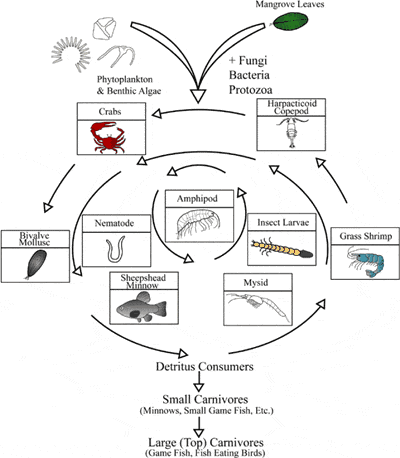Tropic structure is a tiered structure of the organism in an ecosystem, with each level representing those organisms that share a similar function and food source. Trophic structure diagrams also depict the energy transfer from on trophic level to the next. By organizing the estuary into a trophic structure, we are given an indication of the productivity of the estuary. Productivity is basically the ability of the estuary to yield organic matter. A productive estuary is one that has high diversity, high survival rates, little to no invasive species, and whose organisms continually carry out life processes; in other words, the estuary is sustainable. Freshwater inflows are fundamentally linked to estuarine productivity.
An example of a trophic structure is shown below. This trophic structure looks at the aquatic ecosystem from a bottom up point of view. The bottom tier organisms, or primary producers, are the most energy efficient, while the top tier, or top predators, are the least energy efficient. Primary producers produce their own food, making them more energy efficient, while top fish or predators require many organisms, making them less energy efficient. Another way to say this is that predators have a much higher energy demand than do phytoplankton. The trophic structure in the figure below shows an ecosystem functioning by interrelationships and life processes. Freshwater inflows balance the estuaries by providing hydrological requirements for the organisms.
